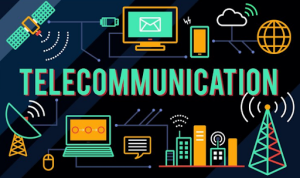Do you sometimes ponder how information was carried long distances before the development of today’s communication systems? What kind of language would people use if they could go faster than speech? It is the intelligent and innovative Morse code that holds the answer. Forgetting that in the past, it used to be very difficult to transmit messages between two distant destinations was an arduous task prone to mistakes.
A revolutionary solution to this challenge was the Morse code created by Samuel Morse and Alfred Vail around the early 1830s. The system of dots and dashes was so easy that it changed how people talked. Giving ground to the present communication systems.
This paper will address the background and relevance of Morse in the modern day through the analysis of technology development and its influence in past eras. In essence, we will see how this erstwhile revolutionary system helped to transmit messages over long distances. And influence world events along the way.
What is Morse Code and Who invented the system of Morse Code?
To understand how the Morse code changed telecommunication, it is essential to examine its history with Alfred Vail, a good machinist and mechanic, America’s famous artist, and an inventor. Samuel Morse designed a communication path based on electrical impulses. The technology’s foundation was a simple concept. Communication using the Morse code, which is the conversion of messages to a series of dots and dashes.
The vision of Samuel Morse or telegraph.
During his journey back home after spending time in Europe in the early nineteen thirties. Samuel came forth with a notion of an electromagnetic telegraph. These prompted ideas and discussions about recent advances in electromagnetism. That he had with some of his fellow travelers. Morse imagined the development of an electronic messaging system.
Development of Morse Code
Morse built his vision of the telegraphic system around a code capable of transmitting letters and numbers based on basic electrical impulses. He worked together with Alfred Vail in the development of it. It soon formed the base for the revolutionary telegraphic system. Enabling transmission of complicated signals over long distances.
Telegraphy: The Communication Revolution

The introduction of the Morse code made telegraphy a great device. Which completely transformed long-distance communication. The next part examines the speedy use of telegraphy and its effects on society, such as morals, religion, gender relations, and politics.
The spread of Telegraph
The telegraph system enabled people to communicate almost instantly within short distances. In 1844, the first operational telegraph line from Washington, DC, to Baltimore, Maryland, was completed. This, therefore, started the telegraph’s spread across the U.S., eventually worldwide. What was involved herein, and what part did Morse code play?
Effects on business and trade activities
The telegraph was the most excellent tool that made the transmission of information accurate. And fast to commercial and trading sectors in the world. Through this invention, businesses would send and get orders price quotations. As well as market updates within a concise duration compared to the traditional techniques. The telegraph transformed economic landscapes and increased productivity. And was instrumental in the industrialization of nations. What notable changes in economics occurred due to the telegraph?
Role in news and journalism
This revolution was also adopted in the news industry through the telegraph. Rapidity in spreading information quickly was noticed by news agencies such as the Associated Press (AP). In doing so, journalists began to be able to send the current news from afar, providing quicker and better reporting on the events worldwide. What were the effects of the telegraph on news gathering and distribution?
Crises and conflicts.
Morse code translator was involved in multiple historical disasters. And wars where it became an essential means of communication.
The American Civil War
Telegraph and Morse codes impacted military operations and war conduct throughout the American Civil War. Telegraph systems provided means of coordinating troop movements and receiving field intelligence. The ease with which the messengers would communicate the code contributed significantly to its effectiveness during hostilities. What was the significance of communication technologies in the American Civil War?
The Sinking Of The Titanic
Back in 1912, the life-saving capabilities of the Morse code translator were illustrated by the tragedy involving the RMS Titanic. Transmission of Mayday via wireless telegraph, a distress signal sent by the ship to nearby vessels, was significant. The commitment of the telegraph operators and the universality of the adopted code proved instrumental for the successful rescue operations. Given the above, how did Morse code help respond to this maritime disaster? And what changes were made to the marine communication laws due to the Morse code?
Morse Code and its Legacy in Modern Telecommunication
Despite the evolution of contemporary telecommunications, that has little to do with Morse code. It is reflected virtually everywhere in today’s digital world. This part discusses the everlasting legacy of it.
Morse Code in Aviation
Pilots and air traffic controllers would still use Morse code translators despite the wide acceptance of voice communication in aviation. Aviation enthusiasts will still come across Morse code in the form of aviation navigation aids. Like VOR (VHF Omni-Directional Range) and NDB (Non-Directional Beacon) stations. What is this? Why is it used in aviation? Its relevance today.
Amateur Radio in Morse Code.
Despite that, there are still “ham” amateur radio operators who use it for communication. It is, therefore, an essential medium of communication for enthusiasts. Especially in times of emergency and where all other means to communicate fail. Why are amateur radio operators maintaining their tradition of using it? And what did this change during the digitalization?
Pop Culture and Morse code.
Popular culture cannot ignore it. It is also trendy in literature and films, where it is depicted as a means for connecting and communicating with other characters. The classic novel “Moby Dick” and modern films such as “The imitation game” depict Morse code in a unique, long-lasting sense. What do these depictions of it in American popular culture tell us about its staying power in our collective consciousness?
Conclusion
The seemingly uncomplicated Morse code consisting of dots and dashes transformed communication into what would be beyond the dreams of Samuel Morse and Alfred Vail. Though it started as a simple solution to long-distance communication, morse code nowadays plays an essential part in our tech history. However, there have been advancements in today’s telecommunications going way beyond it. Its legacy, such as aviation, hobbyism, and culture, is still felt.
The surprising travel of Morse code from conception to its modern-day applications underscores its persevering significance. It serves as a confirmation of human inventiveness. And tenacious interest in practical and viable means of communication. It’s effect on commerce, news. And strife determination highlights the significant impact it had on society. As we reflect on the past, we are reminded that the show and future of media transmission are built on the establishments laid by the pioneers of it.
Author Bio:
Wajeeha Mushtaq is a wordsmith with a knack for storytelling. She can weave tales that enchant, educate, and inspire. With a versatile writing style and a passion for crafting engaging content, Wajeeha is the perfect choice for any business or organisation looking to take its content to the next level.





Leave a Reply